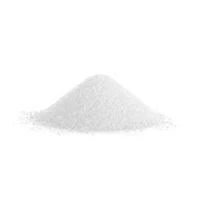
Exploring the Uses and Effects of Monosodium Glutamate as a Food Additive
The Role of Monosodium Glutamate in Food Additives
Monosodium glutamate (MSG) is one of the most commonly used flavor enhancers in the food industry. As a sodium salt of the amino acid glutamic acid, it has been utilized for over a century to enhance the taste of food. The discovery and development of MSG date back to 1908 when Japanese chemist Kikunae Ikeda isolated the compound from kombu seaweed. He identified it as the source of umami – the fifth basic taste, alongside sweet, sour, bitter, and salty.
Understanding Umami and Its Importance
Umami translates to “delicious” or “savory” in Japanese and is characterized by a rich, pleasant taste. Foods high in glutamate contribute to this flavor profile, and MSG specifically works to accentuate the natural savory flavors of a dish. This flavor-enhancing quality makes MSG a popular ingredient in various cuisines, especially in Asian dishes, processed meats, snacks, soups, and sauces.
The chemical structure of MSG allows it to bind to umami receptors on the tongue, thereby delivering a stronger flavor experience. Research has shown that this taste modulation not only improves palatability but may also lead to increased satisfaction and food enjoyment, encouraging people to consume a variety of foods.
Safety and Controversies
Despite its widespread use, MSG has faced scrutiny and controversy over the years. The term “Chinese Restaurant Syndrome” was popularized in the 1960s when consumers reported adverse reactions such as headaches and nausea after consuming foods high in MSG. Although these claims have led to public concern, numerous studies conducted since that time have generally concluded that MSG is safe for the general population when consumed in moderate amounts.
food additive monosodium glutamate

Organizations such as the U.S. Food and Drug Administration (FDA), the World Health Organization (WHO), and the Food and Agriculture Organization (FAO) consider MSG safe. The FDA categorizes MSG as “generally recognized as safe” (GRAS), and extensive research has failed to establish a clear link between MSG and significant adverse health effects for most individuals.
Culinary Applications and Benefits
One of the primary advantages of using MSG in food preparation is its ability to enhance flavor without the addition of significant quantities of sodium. By improving the taste of low-sodium products, MSG serves as a useful tool in developing healthier food options without compromising flavor. This becomes increasingly important as public awareness of health issues continues to grow, particularly concerning sodium intake and its relation to hypertension and cardiovascular diseases.
In commercial food production, MSG is favored for its cost-effectiveness and efficiency as a flavor enhancer. It can improve the taste of low-quality ingredients, leading to higher customer satisfaction and a better overall product experience. Furthermore, MSG is often used in vegetarian and vegan products to replicate the savory flavors that are traditionally associated with meat-based dishes.
Conclusion
Monosodium glutamate has undoubtedly cemented its place as a key ingredient in the culinary world, offering benefits that range from enhanced flavor to improved food satisfaction. While the safety and health implications of MSG have been topics of discussion, current evidence supports its safety for most individuals. As cuisine continues to evolve, and consumers seek out flavor without excessive sodium, MSG is poised to remain a staple in both home kitchens and commercial food establishments. Thus, understanding monosodium glutamate's role not only broadens our culinary horizons but also enhances our appreciation for the science of flavor enhancement.
-
Comprehensive Guide to Acetic Acid as Preservative: Benefits, Uses & Future TrendsNewsNov.24,2025
-
What Is a Food Additive? Global Insights, Applications & Future TrendsNewsNov.24,2025
-
968 Sweetener: The Modern Solution for Health-Conscious SweeteningNewsNov.23,2025
-
Discover the Benefits and Uses of 965 Sweetener (Erythritol) | Tenger ChemicalNewsNov.23,2025
-
961 Sweetener - A Next-Gen Sugar Alternative for Health and IndustryNewsNov.23,2025
-
Understanding 960 Sweetener: The Modern Sugar Alternative for Health and IndustryNewsNov.22,2025
-
Everything You Need to Know About 955 950 Sweeteners – Benefits, Uses, and TrendsNewsNov.22,2025
Hebei Tenger Chemical Technology Co., Ltd. focuses on the chemical industry and is committed to the export service of chemical raw materials.
-

view more DiethanolisopropanolamineIn the ever-growing field of chemical solutions, diethanolisopropanolamine (DEIPA) stands out as a versatile and important compound. Due to its unique chemical structure and properties, DEIPA is of interest to various industries including construction, personal care, and agriculture. -

view more TriisopropanolamineTriisopropanolamine (TIPA) alkanol amine substance, is a kind of alcohol amine compound with amino and alcohol hydroxyl, and because of its molecules contains both amino and hydroxyl. -

view more Tetramethyl Thiuram DisulfideTetramethyl thiuram disulfide, also known as TMTD, is a white to light-yellow powder with a distinct sulfur-like odor. It is soluble in organic solvents such as benzene, acetone, and ethyl acetate, making it highly versatile for use in different formulations. TMTD is known for its excellent vulcanization acceleration properties, which makes it a key ingredient in the production of rubber products. Additionally, it acts as an effective fungicide and bactericide, making it valuable in agricultural applications. Its high purity and stability ensure consistent performance, making it a preferred choice for manufacturers across various industries.





